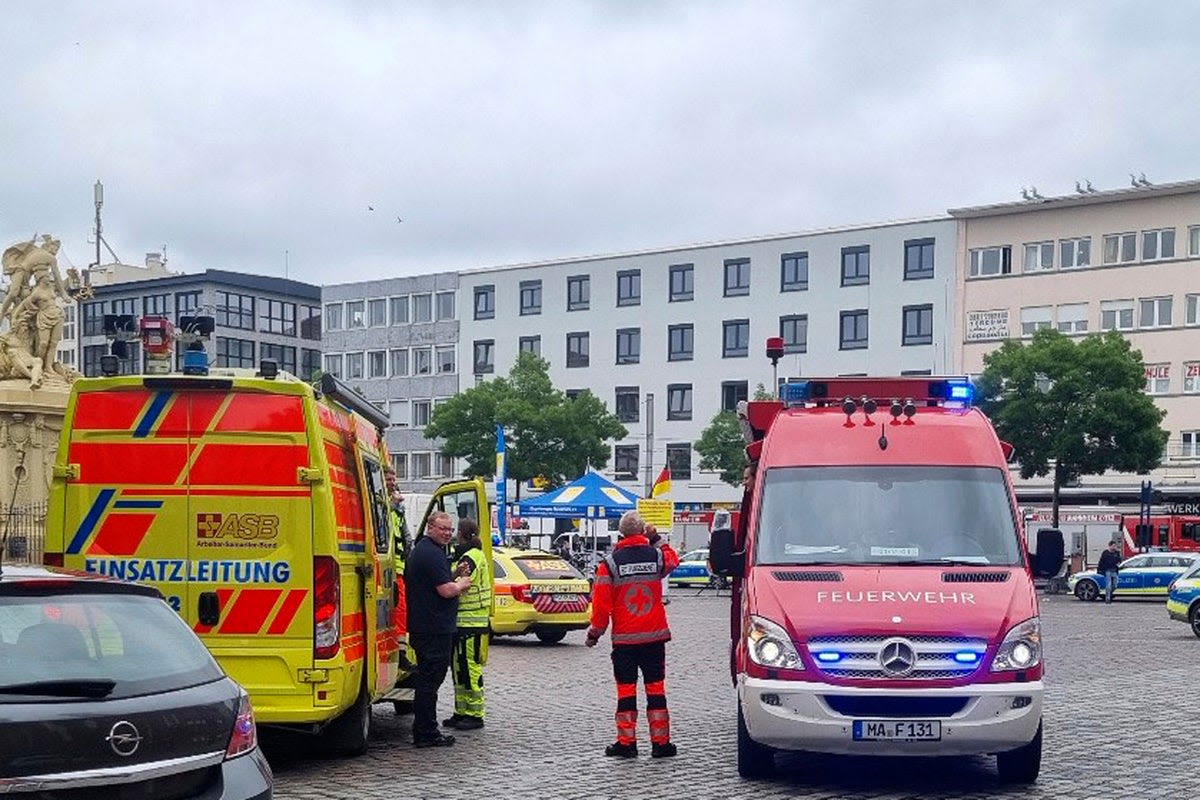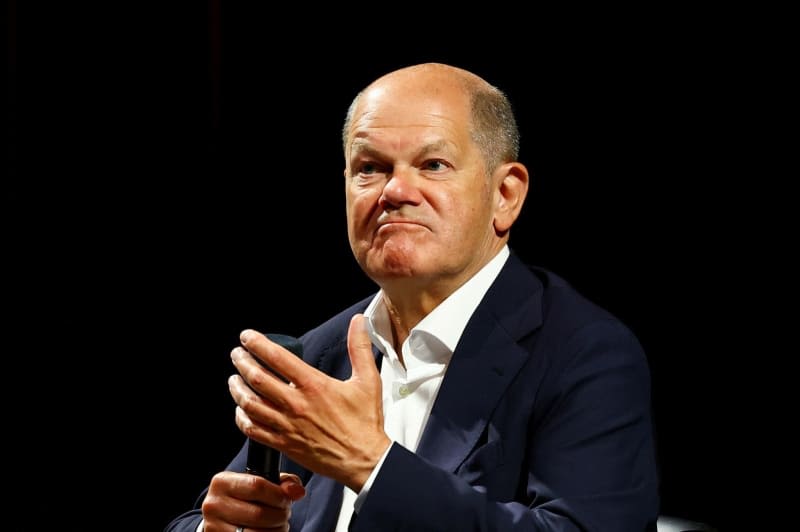Search results
News about Germany, Mannheim, anti-Islam activist
News about Ukraine, Putin, Kharkiv
Also in the news
The following table lists the 80 cities in Germany with a population of at least 100,000 each on 31 December 2021, as estimated by the Federal Statistical Office of Germany. A city is displayed in bold if it is a state or federal capital, and in italics if it is the most populous city in the state.
- Berlin - 3,520,031
- Hamburg - 1,787,408
- Munich - 1,450,381
- Cologne - 1,060,582
- Frankfurt Am Main - 732,688
- Stuttgart - 623,738
- Düsseldorf - 612,178
- Dortmund - 586,181
- Essen - 582,624
- Leipzig - 560,472
Berlin is the capital of Germany and holds city-state status as the city is surrounded by the state of Brandenburg. Berlin is the largest city in Germany by population. Around 3,520,031 people live in Berlin. Forests, parks, rivers, and lakes cover roughly 30% of the capital region. Berlin has played an important role in German society since the 15...
Hamburg is the second-largest city in Germany, with a population of around 1.7 million. Located in the country's north, Hamburg was once known for being an important industrial city. Today, it is known for being a prominent tourist attraction and for its large entertainment district. Hamburg also has the claim to fame of having more bridges than an...
Munich is the third-largest city in Germany and the largest city in the region of Bavaria. Munich is perhaps best known for Oktoberfest, an annual festival of German culture that is held in October. The area surrounding Munich has the highest population density in Germany. Munich is home to one of the largest parks in the world, the English Garden ...
Cologne is found near the German borders with Belgium and the Netherlands. Cologne is famous for its Cologne Cathedral, which is Germany's most visited landmark and hosts around 20,000 visitors a day. The Cologne Cathedral is notable for its long construction process, which took a total of 632 years! Cologne is an important city in Germany's Rhinel...
Formerly one of the most important cities of the Holy Roman Empire, Frankfurt today is known as an important financial center not only for Germany but for the European Union as a whole. Frankfurt’s financial center features many high-rise buildings, making it one of the most recognizable skylines of Europe. Frankfurt is also known for being home to...
Stuttgart, located in Baden-Wurttemberg, has a population of 623,738. The city is covered in hilly terrain with many green spaces. The area has a growing economy and therefore, a fast growing population. The economy is supported by its high-tech industry. Both Mercedes-Benz and Porsche hold their headquarters in the city. This state is bordered by ...
Düsseldorf serves as the state capital of North Rhine-Westphalia and therefore is the center of public administrative activities which provide the majority of jobs. Düsseldorf has existed since long before the 17th Century and is rich in history and cultural traditions including classical music, opera, and theater. Düsseldorf is notably home to the...
Like Düsseldorf, Dortmund is also located in North Rhine-Westphalia. The city dates back to around the year 882. Dortmund is known for being the center of the Ruhr Area, a highly-developed, highly-industrialized area of Germany. Dortmund was hit by bombs more than any other city in World War II. Today, however, the city has rebuilt and reinvented i...
Essen’s 582,624 inhabitants make it the ninth-largest city in the country. Also located in North Rhine-Westphalia in the heavily industrialized Ruhr area, Essen is known for being home to many German corporations, including the largest energy companies in Germany, E.ON and RWE. Essen is also well-known for being one of the greenest cities in the co...
Leipzig is the tenth-largest city in Germany. It is home to 560,472 residents. Leipzig today is known for being a very liveable city, as well as for its distinctive Renaissance-style buildings and famous opera house, Oper Leipzig. Leipzig is around 160 km southwest of Berlin. The main train station of Leipzig, called Hauptbahnhof, is the largest tr...
- Amber Pariona
People also ask
What is the largest city in Germany?
What are the major cities in Germany?
How many cities in Germany have a population of 100,000?
Is Berlin the biggest city in Germany?
Germany, with its rich history and economic prowess, is home to some of Europe’s most populous cities. From the bustling metropolises to charming towns, Germany offers a diverse array of urban landscapes. In this article, we’ll delve into the 10 largest cities in Germany, exploring their populations, cultural significance, and more.
- Berlin. With almost 3.8 million inhabitants, the undisputed number 1 is the German capital of Berlin. Each of the city's districts has its own unique atmosphere, from chic to grung to hip to international.
- Hamburg. Hamburg is Germany's second-largest city with almost 1.9 million inhabitants. The striking northern city on the Elbe offers maritime flair and elegant buildings, especially along the Binnenalster (picture).
- Munich. Munich, the third-largest city in Germany, has more than 1.5 million inhabitants. Tradition and the cozy Bavarian "Gemütlichkeit" shape this southern city.
- Cologne. Almost 1.1 million people live in Cologne on the Rhine River. What Oktoberfest is for Munich, "Karneval" is for the Rhinelanders. Dressed in colorful costumes, revelers take to the streets to celebrate.
- Berlin. It shouldn’t come as a surprise that Berlin (the capital) is also the most populated city in Germany with a total population of 3,520,031 people.
- Hamburg. Hamburg is the second-largest city in Germany with a population of 1,787,408 people. Just like Berlin, this is a historic city which has held an important status for many centuries.
- Munich. Munich is the largest city in Bavaria and the third-largest German city with a population of 1,450,381 people. Internationally, Munich is perhaps best known for being home to the famous Oktoberfest, which takes place annually with millions of visitors.
- Cologne. Cologne is another historic city in Germany, and it was founded already in the 1st century AD during the Roman empire. It later became one of the leading members of the Hanseatic League.
The six largest cities in Germany. Four cities have a population of over 1 million (December 2014), yet another ten cities have more than 500,000 inhabitants. About 80 cities are called Großstadt with a population of more than 100,000.
The largest city in Germany is Berlin, with a population of 3,426,354 people. Geonames. Sources.







